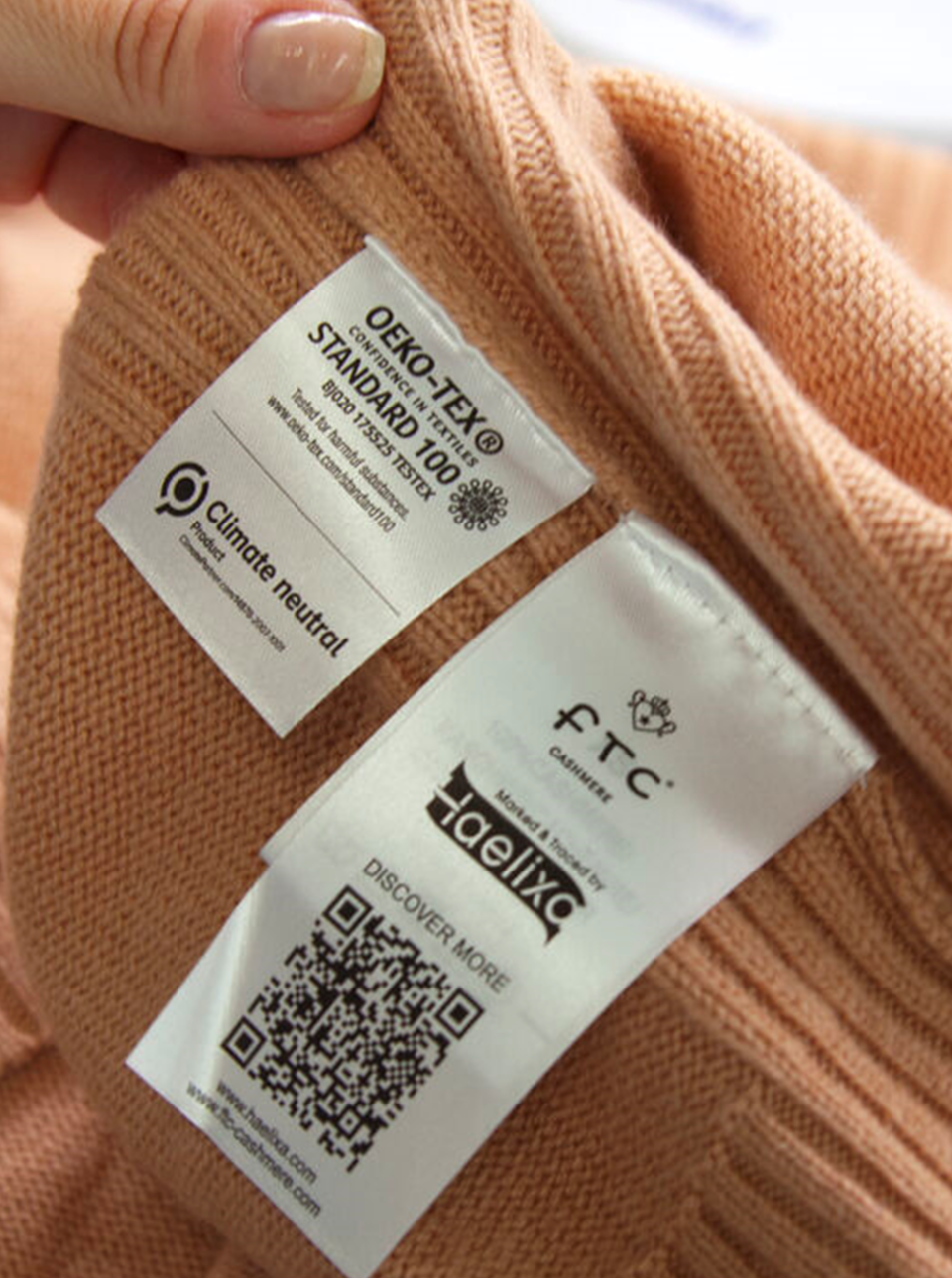Using Forensic Testing for Raw Material Traceability

Even when doubt does arise in today’s digital age, it’s hard to question hard forensic evidence like DNA. The fashion industry has caught on, gaining assurance how applying physical DNA markers on cotton, wool, hemp, cashmere and more can validate fiber provenance, quality and sustainability claims.
Recent UFLPA restrictions, shipment confiscations, mounting consumer pressure and a looming EU Digital Product Passport (DPP) have all increased the urgency for traceability, but not all solutions are created equal.
More from Sourcing Journal
“Physical traceability is the thread that weaves transparency into the fiber-to-product supply chain. It unravels the story behind every strand, revealing the origin, journey and transformation of each fiber,” said Holly Berger, marketing director of Swiss physical traceability solutions company Haelixa, which deploys physical DNA markers and has partnered with everyone from Soorty Denim to Damtex Textiles to Rieter Machines. “Forensic testing is the most secure way to prove physical traceability and validate ingredient claims.”
While DPP regulations aim to create more consistent visibility into the supply chains, an important step to encouraging traceability of raw materials, Berger notes there are potential gaps and risks to a “digital fingerprint” that is not physically attached to the materials. “There is the risk that batches or steps might be skipped; it is impossible to know that the information is 100 percent accurate,” she said. “This is where collaboration within the traceability community becomes important. Only when physical traceability solutions are used to mark the physical materials, with that information uploaded to a digital solution, will the risks in the supply chain significantly decrease.”
Not just for cotton
Xinjiang cotton and forced labor issues have made cotton provenance top of mind, but the truth is, traceability for all natural fibers is essential. Outside of cotton, said Berger, the highest demand for traceability is with recycled fibers and more eco-friendly bio-based fibers, like hemp, nettle and linen. Premium fibers are also seeing large growth, from organic and Egyptian cotton to cashmere, silk and fine wool.
“Traceability is becoming important in recycled and bio-based fibers that do not have existing standards,” said Berger, who called out hemp as a new fiber where commercial production is relatively nascent. “While brands are starting to blend hemp into their textiles, there is not yet a defined group that determines what is the best quality, fiber length, durability or farming conditions.”
Swiss cashmere company FTC , which has partnered with Haelixa since 2020, is a luxury case study for physical verification. The company already knew its cashmere came from its own vertically integrated goat farms, but it wanted third-party verification.
“We had a very clear understanding and visibility on what was going on in our supply chain. What was missing is an even more official proof than our own documentation and knowledge,” said Andreas Knezovic, CEO, FTC. “We have been following different provenance-focused projects very closely (from RFID to blockchain), but we always thought something was missing. When I got an introduction to what Haelixa was doing, I was immediately hooked.”

FTC Cashmere applies Haelixa’s DNA markers directly to the raw material before dyeing, but the process can be done later in the supply chain as well. Haelixa’s sprayer device is engineered to add the DNA markers to fibers. As it is done with very low humidity, the markers and spray do not alter, harm or change the fibers in any way. The sprayer is only one step in a full solution offering. The markers are vegan, non-GMO and harmless, and are not detectable to the naked eye.
Haelixa determines whether marked fibers are present by extracting the DNA from a sample (provided by the stakeholder), then using PCR testing. “This testing gives our customers a forensic result. From there the yes/no report can be uploaded into any CRM, ERP, import/export document, or other data system,” Berger said.
The markers act like a key-lock system, where unless you know what DNA to look for on the sample, you will not know whether it is marked. This is an extra level of security for the manufacturer or brand, to know that their markers cannot be duplicated or altered.
“For us, transparency is really the key to sustainability,” said FTC Cashmere’s Knezovic. “Haelixa helps us make the otherwise invisible visible for our customers, for true transparency in our value chain.”
To learn more about Haelixa, click here.

